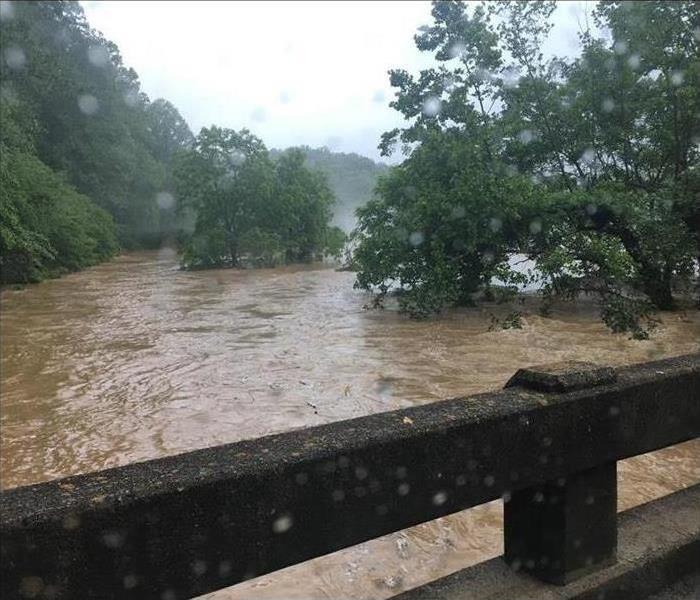Avoid Deep Trouble by Avoiding Even Shallow Water
1/23/2019 (Permalink)
My first car had a few problems. Mostly limited to a few rust spots, no A/C and some unidentified stains in the upholstery, I categorized most of my little car’s troubles as purely cosmetic. It had one flaw, though, that was less than cosmetic: the engine stalled whenever I drove through a puddle. Whenever I would wake up and hear the rain tapping the roof, I would wonder how many times my car would stall before I made it to school. Hopefully upon hearing the story of my struggling car, your reaction is, “Wow! That’s not safe. You really shouldn’t drive that car through any puddles at all!” This is the kind of uncertainty that we should all feel when faced with a flash flood. Flash floods can not only stall a car, but can also wash it away.
Before the Flood
If a flash flood could be coming your way, make sure that you know where is the safest place to be. You should locate high ground near you. Places like river beds and ditches are already designed to collect water and will be the first places to flood. You should secure items that could possibly be washed away and stock up on sandbags to help protect your home from the flood waters.
During the Flood
If you do find yourself driving when a flash flood hits, do not drive through water of an unknown depth. It only takes 2 feet of water to wash away a car and flood waters can hide debris and other objects that may be blocking the road. If your car does stall during a flash flood, abandon the car and get to higher ground. The most dangerous part of flash floods is how quickly they can escalate, in some cases allowing only a few moments to get to a safe location.
My sixteen-year-old self was not smart enough to avoid puddles in my struggling car. As adults, let us pass on the wisdom that it is worth it to avoid driving and walking through flood waters.
Find out more from the National Weather Service






 24/7 Emergency Service
24/7 Emergency Service
